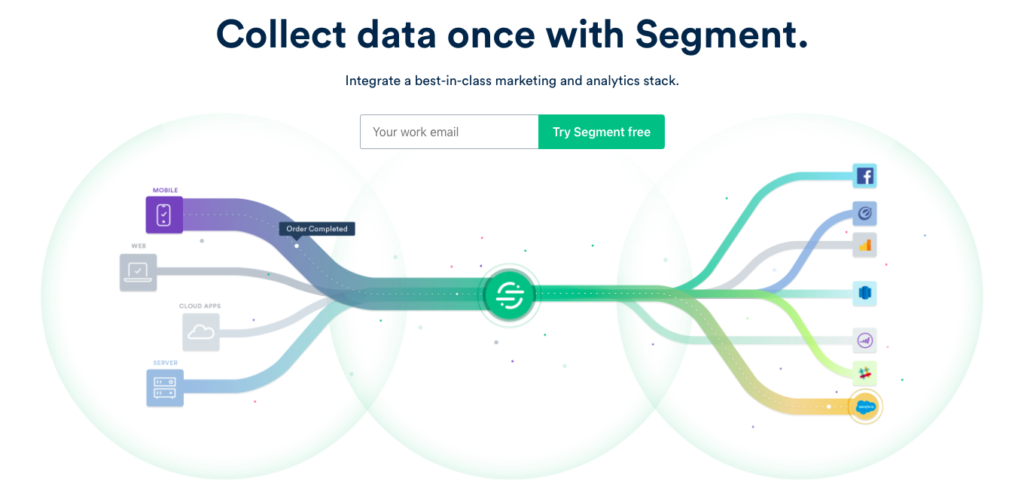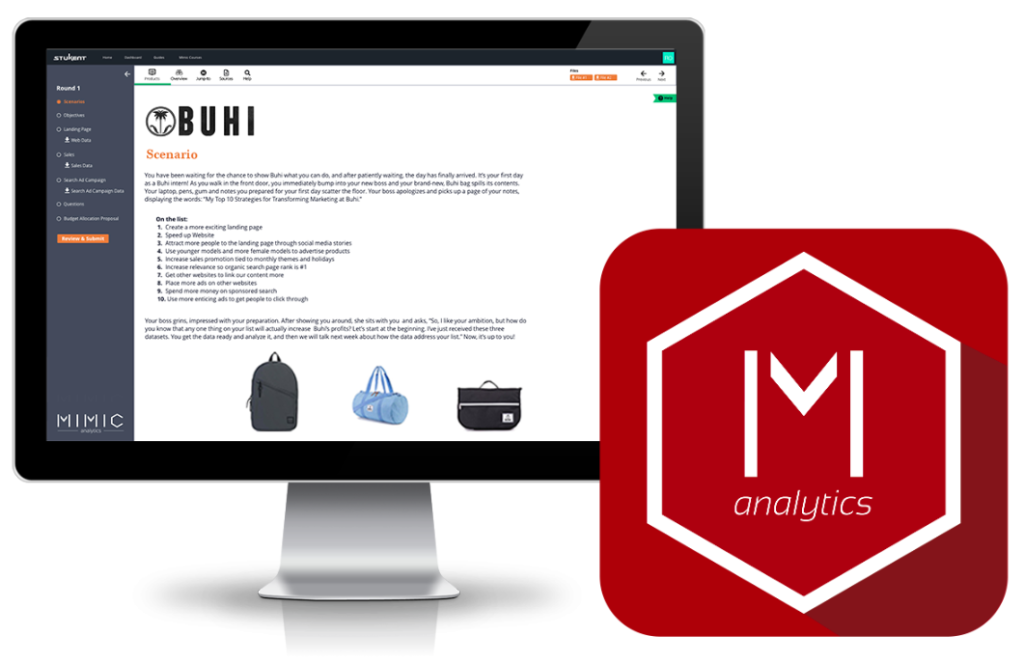Every marketer must know how to use target marketing.
Target marketing makes campaigns more efficient, effective, and profitable. If you don’t market to a specific audience, then you’re really not marketing to anyone. This is one of the most basic principles of marketing, but in practice, it can be quite complex.
As marketing has evolved into a digital space, segmentation, targeting, and positioning have become even more powerful. So how do you teach them in a continually changing landscape?
This step-by-step guide will give you actionable tips and tricks for helping your students understand target marketing. With each step, you’ll find an activity to try in class. You can use these activities to increase class engagement, provide unique learning experiences, and try new things!
Here’s a video to help you out with the first few steps:
Step 1: Begin with the Basics of Market Segmentation
Before you jump into the nitty gritty details of market segmentation, help your students understand the basics.
What is Market Segmentation?
According to Modern Marketing Principles, “Market segmentation is dividing the larger market into smaller segments based on meaningfully shared characteristics and shared needs.”
The purpose of market segmentation is to find the right audience to target which saves marketers time and money. Businesses want to determine their ideal customers: the people who are most likely to purchase their products.
Marketing mixes can be adjusted to fit the interests of different segments. By doing so, they provide greater value for their customers and increase profits.
Types of Market Segmentation
Market segmentation can be completed through various methods, but there are four major types of market segmentation.
Types of market segmentation include:
- Demographic – age, gender, income, occupation, etc.
- Geographic – location, climate, population, etc.
- Psychographic – interests, personality, activities, etc.
- Behavioral – usage rate, usage situation, etc.
Feedough provides a helpful visual of the types of market segmentation:

Activity: Divide the classroom into four groups, and assign each group a segmentation type. Require each group to research and prepare a three minute presentation to share with the class.
Step 2: Share Market Segmentation Examples
Students often learn best through example. Below you’ll take a deeper dive into the types of market segmentation via market segmentation examples.
It is important to note that marketers will often use buyer personas to capture their ideal customer based upon the segmentation methods they use. A buyer persona brings the characteristics of an audience to life. It can capture demographics, values, goals, challenges, etc.
Demographic Market Segmentation Examples
Demographic segmentation divides people based upon age, gender, race, occupation, income, education level etc.
If McDonald’s was marketing fall-inspired lattes, they might consider targeting the following demographic:
- Age: 25-45
- Gender: female
- Income: $20,000 – $40,000

Geographic Market Segmentation Examples
Geographic segmentation divides people based upon location, including climate and population.
If Patagonia was running a marketing campaign for a toddler’s puff onesie, they might consider targeting locations such as
- Countries with heavy snowfall
- Cities near national parks

Psychographic Market Segmentation Examples
Psychographic segmentation divides populations by interests, lifestyle, values, attitude, etc.
If Chevrolet was marketing the Silverado, they might target psychographic characteristics such as:
- Lives an active lifestyle
- Enjoys the outdoors
- Values vehicles that can go anywhere

Behavioral Market Segmentation Examples
Behavioral segmentation takes into account usage rate and usage situation.
If Apple were releasing a new iPhone model, the might target behaviors like:
- Purchases new phones during the holidays
- Has never purchased an Apple product
- Frequently purchases Apple products

Activity: After sharing these market segmentation examples, have each student briefly create a full buyer persona for one of the four examples.
Step 3: Familiarize Market Segmentation Tools
It can be difficult to jump into the segmentation process, so help your students become more familiar with popular market segmentation tools.
Google Analytics
Google Analytics is the industry standard of analytic tools, and to top it off, it’s free. Users can easily create a property then follow Google’s outlined steps to embed a code into the website’s landing pages. Once the code is embedded, Google will start collecting user data. Marketers can use the data to determine what their market is like and how to segment it.

Google Analytics can determine anything from customer location to a customer’s visit frequency.
Segment
Segment is a freemium service that compiles data from any platform then places it in a navigable dashboard. It tracks every customer interaction and allows users to filter contacts by criteria. Marketers can use Segment to build audiences and computed traits.

Users can then sync those audiences and traits with marketing tools to personalize campaigns.
Yandex Metrica
Yandex Metrica is another free segmentation tool that analyzes customer characteristics and site traffic. It tracks customer sessions and maps user clicks, scrolls, and keystrokes. It helps marketers narrow their segments based upon the ways customers interact with their site.

Activity: For a longer project/activity, have your students complete the Google Analytics for Beginners certification. If you have ambitious students, they can complete the Advanced Google Analytics certification as well. Both are free and provide opportunities for resume-building.
Step 4: Introduce Targeting and Target Markets
Segmentation and targeting go hand in hand. Targeting occurs after the market has been segmented. Basically, marketers zero in on a segment or a group of segments to focus their efforts. The chosen segments become target markets.
Modern Marketing Principles suggests target markets must be:
- Identifiable – characteristics of the segment are measurable
- Sizable – segment is large enough to support profits
- Stable – segment is predictable
- Accessible – segment can be marketed to
- Congruent – segment aligns with company objectives and resources
According to Hootsuite, “The better you understand your target market, the more closely you’ll be able to focus your ads, so you can pay only to reach the audience most likely to convert into customers. As your depth of audience insight grows, you’ll start to see higher conversion rates and better ROI … “
The more targeted a market is, the more likely it is to convert, which is why companies determine their ideal customer.
Of course, segmentation and targeting should be completed based on valid research. Gut feelings and hopeful ideas are no foundation for a marketing campaign.
Activity: Ask your class to share what company they are an ideal customer for and why.
Step 5: Discuss Target Marketing Strategies
Dive into the deeper details of target marketing strategies.
Once target market segmentation has occurred and target markets have been chosen, the marketer must develop target marketing strategies.
There are three major types of target marketing strategies:
- Undifferentiated
- Differentiated
- Concentrated
Undifferentiated target marketing strategies are commonly referred to as mass marketing. This type uses one marketing mix for a complete market and generally reaches the largest audience possible.
This strategy works best for products that are consumed by large populations with similar needs.
Differentiated target marketing strategies are the most common. Differentiated strategies target a variety of consumers with a unique marketing mix for each segment.
This works best for companies who want to reach a larger population that is broken into segments that don’t have similar needs and/or characteristics.
Concentrated target marketing strategies are often referred to as niche marketing. This strategy targets one market segment with one marketing mix. The goal is to gain a larger percentage of customers by targeting a smaller market really well.
This works best for companies who have a specific target market and can serve that market especially well.
Activity: Ask students to provide real examples of companies who have used these target marketing strategies.
Step 6: Familiarize Targeting Tools
Introduce your students to popular targeting tools. These tools can be beneficial in jumpstarting the targeting process.
Google Trends

Google Trends is a free resource that shares insights to the search volume of specific keywords. Even better, it can show users the location of searches. Marketers can use Google Trends to see what parts of the world would be most profitable to target based upon keyword search volume.
Facebook Insights

Facebook Insights allows data to be collected and viewed on any business Facebook page. This data can include age, gender, and interactions. Facebook can even place users’ promoted ads in front of the target markets collected from Facebook Insights.
Activity: Explore some of Google’s Real Time Search Trends and discuss why this information might be helpful when targeting a market.
Step 7: Provide an Overview of Market Positioning
Segmentation and targeting aren’t complete without positioning. Help your students understand the basics of market positioning.
Market positioning is a strategy for defining and portraying brands or products in ways that cause the ideal customers to perceive them as the best solution for their needs. In other words, marketers want to position their products or brands in the most appealing way possible.
By positioning a product or brand effectively, marketers are able to cut through the noise and speak directly to their target market.
Companies look for a hole in the market that their product can fill – this is the position.
Positioning consists of the strategies marketers use to fill that hole with their product and make it appealing to their ideal customer.
Marketers use the positioning statement and value proposition to express a product’s or brand’s market position for both the company and its customers.
Activity: Have your students come up with examples of companies that have done a great job of positioning their product in its market. Ask them to explain the hole the product filled and how the company made the product look better than its competitors.
Step 8: Explain the Positioning Statement and Value Proposition
It’s important for students to understand the importance of the positioning statement and value proposition. Use this section to help them understand the characteristics of both and how they complement one another.
The Positioning Statement
The positioning statement is a concise expression of a product’s market position. It is the foundation for any elements that go into a product’s marketing.
In order for a positioning statement to do its job, marketers must outline a clear target market with an obvious need that their product can uniquely fulfill. With time, the positioning statement should be able to adapt to the needs of the customer.
According to HubSpot, there are a few requirements your positioning statement should meet:
- Brief and to the point
- Unique and memorable
- Aligns with the company’s core values
- Includes an honest promise
- Sets the company apart from its competitors
- Is clear and measurable
HubSpot also suggests that every positioning statement contains:
- A description of the target market and its needs
- How the product will meet their needs
- What separates the product from its competitors
- Why the target market should believe the product claims
The Value Proposition
The value proposition helps customers understand the distinctive benefit of the product. Customers should easily see the unique value of a product, how it is better than competing products, and how it will solve their problem.
HubSpot suggests that a value proposition statement should have:
- A headline that describes the product’s main benefit
- A brief paragraph that explains what is being offered, to whom and why
- A few bullet points that list benefits and notable features
- An interesting visual element
Activity: Share HubSpot’s positioning statement and value proposition examples with your students and have them discuss what the companies did well. If you want to take this activity a step further, have the students craft a brief positioning statement or value proposition for a product of their choice, using the suggestions within this step.
Step 9: Give Your Students Real Experience in Segmentation, Targeting, and Positioning
The most powerful way to learn is by doing. With the help of the following simulations, you can give your students realistic experience in a safe learning environment.
Stukent Marketing Analytics Simternship™

If your course is geared toward data analytics, Stukent’s Marketing Analytics Simternship™ will provide the best segmentation, targeting, and positioning experience for your analytics students. It will become available during fall of 2019.
Stukent’s Marketing Analytics Simertnship is a marketing analytics simulation in which students are acting as interns at Buhi Supply Co., a fictional company. The simulation teaches students how to solve real-world problems with real-world data. They are expected to make data-driven decisions in order to effectively manage a marketing budget.
Stukent’s Marketing Analytics Simternship™ gives students experience in:
- Segmentation, targeting, and positioning
- Extracting and transforming big data
- Implementing A/B Testing
- Optimizing key performance indicators
- And more!
Be the first to try it out in the fall of 2019! Request free instructor access to Stukent’s Marketing Analytics Simternship™, so your students can gain realistic experience in segmentation, targeting, and positioning.
Stukent Social Media Simternship™

If you’re teaching a social media marketing course, your students can practice segmentation and targeting with Stukent’s Social Media Simternship™.
Stukent’s Social Media Simternship is a social media marketing simulation that allows students to act as a social media marketing manager for Buhi Supply Co. Students are expected to schedule and design social media posts that target specific audiences. They must effectively manage a weekly budget and adjust their strategies to increase ROI.
Specifically, Stukent’s Social Media Simternship gives students experience in:
- Writing targeted social media ads
- Performing demographic targeting
- Social media content promotion strategies
- And more!
Request free instructor access to the Stukent Social Media Simternship™ to see how it can help you teach segmentation and targeting!
Stukent Digital Marketing Simternship™

And if you’re teaching a digital marketing course, Stukent’s Digital Marketing Simternship™ is the simulation for you.
Students can receive hands-on learning in all things digital marketing and will practice segmentation, targeting, and positioning throughout various rounds of the simulation. Students must run various types of campaigns for Kent’s Camera Castle, another hypothetical company.
Stukent’s Digital Marketing Simternship allows students to:
- Write targeted ads
- Perform strategic keyword research
- Measure key performance indicators
- Create high-converting landing pages
Request free instructor access to Stukent’s Digital Marketing Simternship™ to see how it can transform your digital course and bring segmentation, targeting, and positioning to life for your students.
Activity: Use one of these simulations in your course to connect your students to the real-world of segmentation, targeting, and positioning.
Teaching Segmentation, Targeting, and Positioning
Teaching segmentation, targeting, and positioning can be tough. Although they are basic marketing concepts, they can be hard to grasp without actual experience.
With the help of this step-by-step guide, teaching segmentation, targeting, and positioning will be a breeze. The activity suggestions within each step can provide you with opportunities to engage your students and switch up your regular classroom routine.






